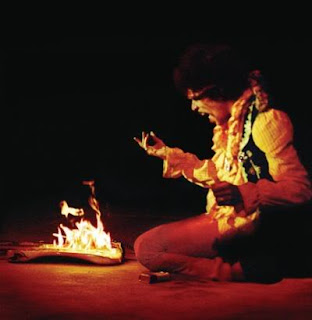Newbury got it's bypass, Manchester Airport built its Second Runway and even Farmer Brigham managed to save most of his crop of GM maize.
There were a few wins along the way. Lyminge Forest never received a Rank Holiday Village, Brewery Fields eventually became a wildlife haven and the Great Bear Rainforest was saved.
However as main memory of Lyminge is skinny dipping on Hythe beach, my only contribution to Brewery Fields was to camp there in the rain for a couple of days, and my part in saving Canada's forests involved clowning around in London whilst activists were blocking logging roads in the middle of nowhere (and getting 30 days in prison as a result), I'm not sure how much credit I can claim for these.
But I think that misses the point. Ten thousand trees may have bit the dust building the Winchester-Preston Trunk Road, but by defending a fair number of them Salisbury's water meadows were saved. The Bollin Valley may now be spanned by Manchester Airport's second runway, but the village of Sipson has yet to make way for Heathrow's third. And whilst GM crops may have continued to grow in Norfolk after Lord Melchett's adventure, they don't grow there now.
Noisy defeats, silent victories was the soundbite I repeated as often as I could.
(I may have been a media tart, but at least I was a media tart with a message.)
The thing is, when you lie down in front of bulldozers, the bulldozers usually win, but (and this is a very big but) that does not make it pointless.
Sometimes you win the moral victory - although I'm struggling to think of an example.
Sometimes you simply push up the cost of the project until nobody can afford it - which is what happened to the last Tory road building project.
Sometimes you make the issue too politically toxic for any sensible politician to touch - as with GM and Heathrow.
But more often you simply nudge the cost/benefit equation a little more in your direction until eventually they give up.
Her in Glossop we are in a phony war situation with our proposed new road, the one formerly known as the Mottram-Tintwistle Bypass, but which has been revealed as a trans-Pennine motorway.
Officially the project is dead, having not been funded in the last five year budget of the Northwest Regional Development board and with its long running and frequently shambolic Public Enquiry abandoned.
In reality we all suspect that it's just lying dormant, ready to reappear when the new money arrives in 2015 and it can be a test case for the new, streamlined planning laws.
 But that's not to say that nothing can be done to stop the road, and indeed stuff is being done, just not by me.
But that's not to say that nothing can be done to stop the road, and indeed stuff is being done, just not by me.Down in Hastings they're down in tunnels and up in trees trying to stop the Bexhill-Hastings Link Road. It's a second Battle of Hastings, and seeing as how the bad guys won in 1066, lets hope the goodies win in 2013.
That's not very likely, but that's not the point.
They are fighting the battle to stop the Longendale Motorway right now, in the snow, and hats off to them.
It was pretty cold in the woods in Newbury 27 years ago too, but we were just camping then, with some recreational tree-cutting disruption on the side. By the time the evictions started the sun wasn't exactly cracking the flags, but it was warmer than it is now. An eviction in the snow doesn't sound like any sort of fun.

So if you can, help them out. I've bunged 'em a bit of cash and if there's anyone out there I know who wants to get down there, I'll buy you your train ticket.
But if you can't make it, don't worry. There's plenty more roads and shit planned, like the A555 in Stockport and the new 'World Logistics Hub' at Manchester Airport, which are all in the queue ahead of the Longendale motorway.
In the long run we'll win. Fossil fuels are a thing of the past and the future is greener and cleaner. At some point we'll get Peak Car, and probably before we get the Peak Motorway. These roads and runways are just the last gap of the old, the new is already on the way.
Someone, somewhere is going to be the last person evicted from the path of one of these dinosaur projects. It's highly unlikely to be me, or Sitting Bull down in Sussex, but it could be you.
And if it is you can rightly claim to have been part of a great moment in the history of Civilisation.
The moment the human race realised that to win a war on nature is to be on the loosing side.















